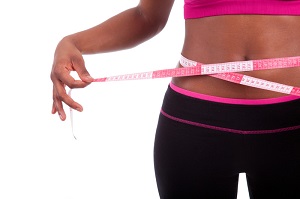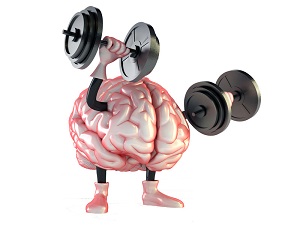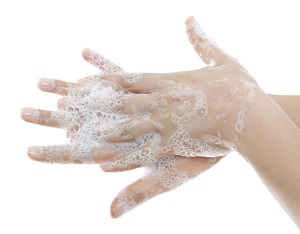
- Make Time.
Just make the time. Initially, it will be a change, but if you can fit in two or three workouts of just 30 minutes a week, you’ll be well on your way to fitness. - Make lunch hour exercise hour.
Take a half an hour to do some exercise. You can even make it a social affair and invite your work friends to join you in a walk. - Get a buddy.
Studies show that when you have an exercise buddy, you exercise more. The thinking is that we will go and exercise so we don’t let the other person down. - Exercise early in the day.
The easiest way to ensure that you’ll exercise for the day is by getting the exercise in early, usually the first thing in the morning. After a little while, it will become a habit and won’t be as difficult having to get up a little earlier. - Combine activities.
You can exercise and do something else at the same time. Read, watch t.v., even chat on the phone with a friend, all while you workout. - Involve the family.
Instead of exercise taking you away from family time, make family time a time for some fitness for all. Go for a walk, play soccer at the park, play a game of baseball in the backyard. You and your family will feel much better.
If you still don’t think that you have time for any of the above, you definitely have time to fit some type of activity in to get you fit. Here are three easy tips: do your exercises during commercials, while you cook and before using the bathroom.
You can easily get in two or three minutes of exercise each time with this method. Do this all throughout the day. Keep doing it day after day and you’ll notice the cumulative effect. And for the most part, you won’t even break a sweat. To top things off, short spurts of exercise are proven to do a better job at speeding up the rate of your metabolism than longer workouts. You can try jump rope, doing situps, pushups, wall squats, body weight squats, or jump on a mini-trampoline.
Do high intensity, short interval exercises for five minutes straight. A great exercise for this would be body weight squats. See how many you can do in five minutes. If you manage to make it through this, you can call it a day for exercise after that. Another option is running up and down the stairs for five minutes straight. Five minutes of this and you’ll know you’ve done something, which explains why you only need to do five minutes of this a day.
It doesn’t have to take a lot of exercise or a lot of time to achieve results. Fit a little something into your busy days and you will be well on your way to getting fit.
For more articles go to http://lifesportfitness.lifestyleezine.com

 You have just gone through one of the most stressful processes your body will ever go through. Your body has gone through significant changes during pregnancy and after birth. It is definitely not ideal to engage in diet restrictive weight loss programs during the early days of motherhood. Remind yourself that the weight did not come on in a day;it will take time to lose the weight you’ve gained. You will need all the additional energy and nutrients to meet the extra requirements of feeding and generally looking after your baby. Lose your weight and get fit gradually. Do not use fat burning pills to get the baby fat off. You need to lose weight and tone up through natural methods.
You have just gone through one of the most stressful processes your body will ever go through. Your body has gone through significant changes during pregnancy and after birth. It is definitely not ideal to engage in diet restrictive weight loss programs during the early days of motherhood. Remind yourself that the weight did not come on in a day;it will take time to lose the weight you’ve gained. You will need all the additional energy and nutrients to meet the extra requirements of feeding and generally looking after your baby. Lose your weight and get fit gradually. Do not use fat burning pills to get the baby fat off. You need to lose weight and tone up through natural methods.  The human brain is the thing which distinguishes human beings from other animals and has enabled human kind to reach astonishing heights. Neurobics is a term to describe exercises that help the brain stay fit.Specific types of sensory stimuli and activities, especially those that involve non-routine actions and thoughts, produce more of the chemicals that encourage growth of new dendrites and neurons in the brain. Routine activities become so automatic that they are completed largely unconsciously. This means they require less activity in the brain, and exercise it less. There are many games and products on the market to improve the brain’s functioning by keeping memory and cognitive skills sharp. However, physical exercise has been proven again and again, to be essential for brain health.
The human brain is the thing which distinguishes human beings from other animals and has enabled human kind to reach astonishing heights. Neurobics is a term to describe exercises that help the brain stay fit.Specific types of sensory stimuli and activities, especially those that involve non-routine actions and thoughts, produce more of the chemicals that encourage growth of new dendrites and neurons in the brain. Routine activities become so automatic that they are completed largely unconsciously. This means they require less activity in the brain, and exercise it less. There are many games and products on the market to improve the brain’s functioning by keeping memory and cognitive skills sharp. However, physical exercise has been proven again and again, to be essential for brain health. Giving birth is a life changing experience for a woman, whether it is her first time or not. After giving birth, your partner will have intense emotions and may feel tired or tearful for no reason. These symptoms are known as baby blues, and will pass within a few days. However, when your partner is still moody or withdrawn days later, postnatal depression can often be the cause. PND is an illness that will not suddenly disappear, and your partner will need your understanding and your help.
Giving birth is a life changing experience for a woman, whether it is her first time or not. After giving birth, your partner will have intense emotions and may feel tired or tearful for no reason. These symptoms are known as baby blues, and will pass within a few days. However, when your partner is still moody or withdrawn days later, postnatal depression can often be the cause. PND is an illness that will not suddenly disappear, and your partner will need your understanding and your help. Charities have been a part of society for many centuries now, helping those in need and less fortunate than you. Run by staff as well as volunteers, there are many ways that charities will raise money for their concern. When you think about charity, you may think about the church or a charity shop in your town; but charities these days are taking on more and more exciting challenges in order to raise money.
Charities have been a part of society for many centuries now, helping those in need and less fortunate than you. Run by staff as well as volunteers, there are many ways that charities will raise money for their concern. When you think about charity, you may think about the church or a charity shop in your town; but charities these days are taking on more and more exciting challenges in order to raise money. Want to keep those germs away to prevent getting colds and the flu? There are several ways to keep you and your household healthy.
Want to keep those germs away to prevent getting colds and the flu? There are several ways to keep you and your household healthy. No matter if your hair is worn long, short or somewhere in between, healthy hair is always in fashion. Indeed, beautiful, shinning hair is a valuable asset. Scalp health holds a lot of significance in terms of hair care as it determines the volume and shine of your hair. There are several scalp circulation and health factors that need constant care and attention to help sustain the condition of your scalp and hair.
No matter if your hair is worn long, short or somewhere in between, healthy hair is always in fashion. Indeed, beautiful, shinning hair is a valuable asset. Scalp health holds a lot of significance in terms of hair care as it determines the volume and shine of your hair. There are several scalp circulation and health factors that need constant care and attention to help sustain the condition of your scalp and hair. If you’ve been inactive for a while due to injury you have to plan your re-entry into a fitness routine carefully. Make sure you have the approval of your Doctor before you start back into any workout routine. Start slow – it will probably feel like you are starting from square one again – and you are, but it won’t take you as long to get back to where you were before the injury. Give yourself time to get back into it. If you lost a month, plan on giving yourself a month to get back on track. You’ve likely lost some strength from being out of your regular workout regime. Start slowly and get reacquainted with your body. Allow your body to tell you how hard to push and when to pull back. For the first couple of weeks back, err on the side of caution. Focus more on getting healthy than losing weight or being able to do what you used to.
If you’ve been inactive for a while due to injury you have to plan your re-entry into a fitness routine carefully. Make sure you have the approval of your Doctor before you start back into any workout routine. Start slow – it will probably feel like you are starting from square one again – and you are, but it won’t take you as long to get back to where you were before the injury. Give yourself time to get back into it. If you lost a month, plan on giving yourself a month to get back on track. You’ve likely lost some strength from being out of your regular workout regime. Start slowly and get reacquainted with your body. Allow your body to tell you how hard to push and when to pull back. For the first couple of weeks back, err on the side of caution. Focus more on getting healthy than losing weight or being able to do what you used to. Being healthy and active will help us all live longer. It is important to keep up with an exercise program as we get older. The benefits of exercise for senior citizens can be truly life changing. Even a small amount of increased physical activity can benefit your functional health as a senior. Improve your mental functions, socialize with friends and help prevent injury and falls – what better reasons do you have as a senior then to stay active and exercise.
Being healthy and active will help us all live longer. It is important to keep up with an exercise program as we get older. The benefits of exercise for senior citizens can be truly life changing. Even a small amount of increased physical activity can benefit your functional health as a senior. Improve your mental functions, socialize with friends and help prevent injury and falls – what better reasons do you have as a senior then to stay active and exercise. As one of the most prominent leafy vegetables in Europe, kale is a wondrous food with a plethora of beneficial qualities. Despite its amazing health benefits and international allure, kale still remains largely under the radar in North America. As a super raw food that is fairly inexpensive and easy to source, there is no reason why we all should not be cooking with this leafy green more often.
As one of the most prominent leafy vegetables in Europe, kale is a wondrous food with a plethora of beneficial qualities. Despite its amazing health benefits and international allure, kale still remains largely under the radar in North America. As a super raw food that is fairly inexpensive and easy to source, there is no reason why we all should not be cooking with this leafy green more often.